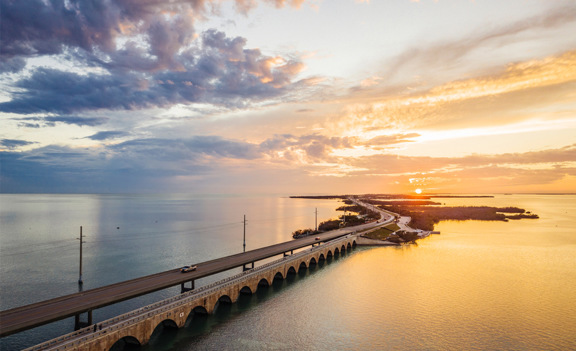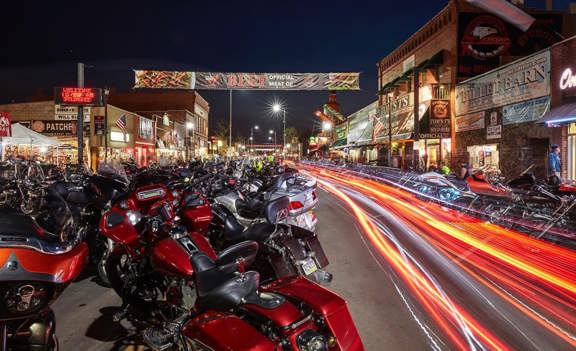
Canada, our giant neighbor to the north, is the second largest country in the world but has fewer people than the Northeast Corridor of American cities stretching from Washington, DC up to Boston, MA. That leaves a lot of room for uninterrupted wilderness. There are almost 1.5 million square miles of forests (approximately half of the total area of Canada) spread throughout the country, and 90% of them are public land. This makes Canada a popular destination for Americans and Canadians alike looking for wilderness playgrounds for their favorite outdoor activities.
The COVID-19 pandemic drastically changed the world unexpectedly in 2020. While it was unsafe to gather indoors, people flocked outside in droves to get out of the house and into nature, with many people finding or rekindling the joy of being outdoors. A few years later, COVID-19 appears to be with us to stay — changing the way all of us work, play, and travel.
In March 2020, the borders were closed to everything but essential travel, and many people were turned away during the country’s lockdown. As of October 1st, 2022, visitors of all vaccination statuses are finally able to return and see the vast beauty of Canada’s massive landscape. If you’ve been waiting these last three years to start your Canada adventure, read on for some tips and highlights of the best locations to begin your northern journey.
Camping in Canada: Where To Visit
Canada is massive, and you can’t expect to see it all in just one visit. It’s important to narrow down what part of Canada best suits your family’s particular outdoor recreational needs. Instead of 50 states, Canada is divided into 10 provinces, and three territories, and each of these areas is unique in what they have to offer.
Each province is full of adventurous opportunities and unbelievable scenery, with protected parkland throughout. Did you know that Canada has national parks, too? There are 37 official national parks and even more provincial parks (much like our state parks) that offer camping and other activities of all types. Here’s what to know before you book your next excursion to go camping in Canada.
Western Canada
The western part of Canada has coastline on the Pacific and Arctic oceans, as well as several mountain ranges, including the Canadian Rockies. There’s a little something for everyone, no matter how you have fun in nature. British Columbia (B.C.) and Alberta are two of the country’s wilderness hotspots and boast some of the most popular national parks in the country.
In the north, the Yukon and Northwest Territories (N.W.T.) provinces are top-tier destinations to view the northern lights. The landscape up there is more rugged and has far fewer amenities or other activities other than what the land offers. It’s easy to feel like you’re the only one for miles and miles, and sometimes you are.
Places To Visit
-
Pacific Rim National Park - Located on Vancouver Island, this wilderness park has coastal trails to hike, excellent surfing, and verdant rainforest.
-
Nahanni National Park - for a trip never to be forgotten. You’ll arrive via float plane to greet the mountains on the continental divide. The South Nahanni River offers excellent rafting, kayaking, or canoeing all the way to Virginia Falls, which drops more than 300 feet (twice that of Niagara).
-
Banff National Park - Canada’s oldest national park and one of the most popular (and beautiful) destinations for nature lovers of all types. The crowds can get large in the peak season, but there are plenty of places to get yourself lost in the dense landscape of this majestic park. Avoid some of the crowds by visiting Yoho National Park in B.C. for a very similar backdrop.
-
Jasper National Park - You’ll have to see it to believe it. This is one of Canada’s most popular national parks, and with good reason. There is an excellent trail system for hikers and bikers alike, as well as copious varieties of wildlife. This park is also a certified Dark Sky Preserve and one of the best places to see stars in this area.
Central Canada
The central provinces of Canada are Saskatchewan, Manitoba, and Nunavut. Saskatchewan and Manitoba lie in the prairie region of Canada, but each features much more to love. Camp, fish, or hike near one of Saskatchewan’s 100,000 lakes. Manitoba is known as the polar bear capital and is one of the best places to see polar bears during October and November. To the north, Nunavut is a massive territory with much of it also situated in the arctic archipelago.
There are no highways here, but if you’re looking for a rugged and primitive adventure far from the beaten touristy path, you won’t find a more exciting challenge.
Places To Visit
-
Auyuittuq National Park - Take a guided sled dog tour through the arctic tundra, or try sleeping in an igloo while the midnight sun blazes brightly outside.
-
Riding Mountain National Park - Enjoy wildlife of all types from beavers to wolves and cougars, and even a wild bison range. Don’t forget your camera!
Eastern Canada
The two most populated provinces in Canada are in the east — Ontario, and Quebec. Bordering several U.S. cities, many people may have crossed the border to visit cities like Toronto, Montreal, or Niagara. But these provinces have more than just urban centers. The beautiful forests and lakes dominate the land just outside of the metropolitan areas and make for an excellent camping excursion that’s not too far for many people based in the northeast.
Newfoundland and Labrador in the far northeast, New Brunswick, and Nova Scotia have coastlines on the Atlantic ocean. The fishing here is outstanding, and for car or RV campers, there are a number of must-see scenic roads that wind along the coastline or into the mountains.
Places To Visit
-
Gros Morne National Park - This park is known for the excellent hiking through the Long Range Mountains that extend from the Appalachians. There is no shortage of excellent scenery, from panoramic vistas to beaches, waterfalls, forests, and even deep fjords. You can also visit the Tablelands, an area where the Earth’s mantle is exposed to reveal rocks from deep in the Earth’s crust.
-
Gaspesie National Park - With more than 87 miles of hiking trails through mountain and alpine tundra.
-
Prince Edward Island National Park - On Prince Edward Island, this national park has sandstone cliffs that jut out over the water and trails with coastal views. In the summer, swim in the sea, camp, and explore these amazing trails for incredible views.
The Northern Lights
Usually seen between 60 to 75 degrees latitude, the northern provinces of Canada are known for the possibility of seeing aurora borealis in the night sky. All night-sky gazers should absolutely add this sight to their bucket lists because it is an experience of a lifetime. The best place to see this phenomenon is actually in the Northwest Territories province of Canada, as it can be seen generally 240 nights a year.
The best time to visit is in the fall or winter, but no need to brave a northern Canada winter just to see the dazzling play of lights in the sky, you can still see it in the summer too. Nor do you have to go as far north as this, you can still see aurora borealis in more southern latitudes, but you must consider timing as the window of opportunity is much narrower.
Tips and Tricks for Camping in Canada
Now that you have a taste of what Canada has to offer. There are a few things to keep in mind before you get on the road.
Don’t Forget Your Passport
You will need a passport or Real ID to enter Canada as an American. The wait times can be long so if you do not already have a passport, start the process immediately.
Permits
A Discovery Pass will let you enter and camp in national parks and is good for an entire year. You can purchase online in advance or buy one at the park station. You’ll also need a camping permit for many popular camping areas. You may have to book months in advance for peak season camping in western Canada destinations in B.C. or Alberta especially. And anglers will also need a permit to fish.
Fires
Especially in western Canada, during some seasons, a fire ban may be in effect. When a fire ban is in place, there can be no open flames at your campsite, so be prepared for cooking your meals and staying warm otherwise.
Short Stays
Most national park campgrounds will have a maximum stay of 14 days, so plan accordingly if you’re looking to do a longer camping trip.
With the borders now open, a whole new wilderness lies just north of us. If you are used to the national parks of the U.S. or just looking for a different new experience, camping in Canada could be just the thing to remind yourself of the breathtaking glory of our big, diverse planet.
Go Camping in Canada With Cruise America
If you’re ready to plan your trip to Canada, get in touch with Cruise America for a quality RV rental. Our fleet of RV rentals helps you experience camping in Canada in comfort and style. Pick up an RV at one of our many convenient rental locations today!





